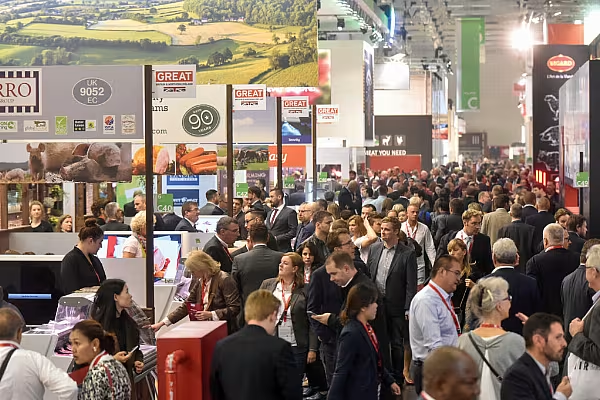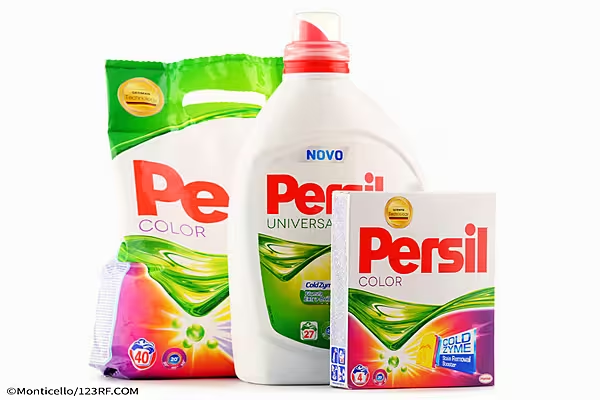Anuga and Germany go hand in hand, and while the macroeconomic landscape for Europe’s largest economy is facing challenges, the retail and food-and-beverage sectors continue to demonstrate strong growth. ESM examines the state of the industry. This article first appeared in ESM Issue 5 2019.
It may be the largest economy in Europe, but the macroeconomic picture for Germany is far from rosy as we enter the final months of 2019, with the long-standing industrial powerhouse facing a potential recession. The Bundesbank recently stated that it expects the economy to remain ‘lacklustre’ in the short term, following the news that the economy shrank by 0.1% in the three months to June.
On the one hand, a number of the problems affecting the German economy are not of its own making, such as the escalating US-China trade war, the forthcoming Brexit, and challenges in the car-making industry, however, others (such as the dedication to maintaining a budget surplus) have had some economists scratching their heads.
While the country is likely to avoid a deep recession, mitigating circumstances could unravel Germany’s long-standing stability, experts have warned, with a knock-on effect likely in the rest of Europe.
As Deutsche Bank put it last month, ‘Given the increasingly fragile state of the global economy, the realisation of one or more risks could easily push the economy into a completely different scenario.’ Testing times, in other words.
Resilient Market
Despite the challenges, the German retail and food-and-beverage industries have proven resilient. In June, German retail sales rose the most (on a monthly basis) in more than 12 years, while, in the first half of the year, retail sales rose by 2.2%, according to data from its federal statistics office.
Consumer sentiment might be down – a GfK indicator in July found consumer sentiment at the lowest reading since April 2017 – but people still have to shop, and the country that gave the world the hard discounter knows a thing or two about retailing.
With 82 million consumers, Germany is the biggest market in the EU for food and beverages, and it is highly concentrated when it comes to retail. Discounters account for close to half of the marketplace (45.7%, according to 2017 figures), followed by supermarkets (39.4%) and hypermarkets (11.9%). In addition, the market has seen a number of demographic shifts in recent years, altering the retail landscape somewhat – as of this year, there will be more German consumers over 60 years old than there are under 30 years old, while the share of single-person households (currently at 37.2%) continues to rise.
Retail Analysis
According to Bundesverband des Deutschen Lebensmittelhandels e.V. (BVLH), the federal association representing the German food trade, recent years have seen a number of trends gaining influence in the German retail sector.
To capitalise on consumer willingness to trade up in certain categories, supermarkets are offering more high-end/premium products, particularly in fresh.
Convenience/food-to-go is also on the rise, as evidenced by Rewe Group’s recent takeover of Lekkerland, a convenience specialist. Urban store concepts are gaining traction – even the discounters are exploring new city-store formats. Sustainability and environmental concerns are now a key purchase consideration, while online shopping, despite being hampered by the low operating margins inherent in the German retail model, is showing growth, albeit at a low level.
ESM caught up with Franz-Martin Rausch, BVLH’s managing director, to learn more.
ESM: What do you think has been the biggest trend in grocery retail in Germany over the past year, and what has been the driving force behind this trend?
Franz-Martin Rausch: Several food trends have dominated the market in recent years. It’s not easy to say which is the strongest one. Sales of sustainable products continue to grow strongly. Around €1.7 billion was spent on Fairtrade food products in Germany last year, with sales up by around 15%, compared to 2017.
Sales of organic products have also increased – almost €11 billion was spent by consumers on organic products in 2018, which is 5.5% more than in the previous year. Above all, the great discussion about climate change is driving this sustainability trend. People feel that they can do something about it with their shopping behaviour.
Sales in the out-of-home catering business also increased year on year. In 2018, it was valued at just under €81 billion, while turnover forecasts of almost €84 billion are expected this year.
German consumer confidence is currently subdued. It was at a two-year low in May. What effect is this having on the grocery landscape?
Shopping for groceries is a routine purchase, and so decreasing consumer confidence has less immediate impact on grocery shopping. A weaker consumer climate, which would have to last for a very long time, would have a bigger impact – on consumer durables, first and foremost.
The convenience channel is gaining significant traction in Germany. Do you see convenience as an emerging force in the grocery landscape?
For some years now, to-go convenience, including freshly cut fruit and vegetable salads, sandwiches and baguettes, sushi, smoothies, and chilled drinks, has been one of product groups with significant growth. This importance will increase in the coming years. More and more consumers are not having breakfast at home any more, while lunches are also rarely cooked at home.
Supermarket operators are seeking to enhance the shopping experience with hybrid gastro concepts, such as restaurant islands directly integrated into the retail environment. Thus, food markets are becoming social meeting places.
Are some retail formats, such as city stores, gaining traction at the expense of others, namely hypermarkets?
The number of hypermarkets in Germany has been falling slightly for years. Currently, there are a [few] more than 800 hypermarket outlets. Ten years ago, it was almost 900. Over the same period, the number of supermarkets and discounters has increased, especially in the inner cities and residential areas.
This development follows the trend that people are again shopping more often in shops that they can reach within walking distance or by public transport. Hypermarkets do continue to be popular, however, among families who buy groceries once a week and shoppers [who] want a wide range of products.
Online grocery is growing in Germany, however, given the low margins in the sector, it is unlikely to become a major force. Do you agree?
Only about 1% of food sales are accounted for by the online food trade.
Compared to countries with a high share of online sales, Germany has a large number of grocery stores, which are easy to reach, while food sales generate only small profits, so it is difficult to earn money with online food trading. For these reasons, it will probably take some time in Germany until the online grocery has a significant market share.
Much has been made in recent years about the purchasing habits of millennials and Generation Z consumers – that they are shopping in different ways, and through different channels. What trends have you seen relating to these consumer groups?
The buying habits of millennials are strongly influenced by environmental protection and sustainability. They want to reduce plastic packaging and food waste, as well as eating less meat and buying more local products. They are also driving the digitisation of the food trade – they grow up with the smartphone, so they use it for shopping.
Food First
German consumers spend around a tenth (10.5%) of their disposable income on food and non-alcoholic beverages, while the purchasing power of German consumers is expected to increase by 3.3%, to €23,779 per capita, according to Bundesvereinigung der Deutschen Ernährungsindustrie (BVE), the Federation of German Food and Drink Industries, which, like Anuga, is celebrating a milestone year in 2019 – its 70th anniversary.
As BVE notes, with more than 40,000 new SKUs coming onto the market each year, German consumers are spoilt for choice when it comes to product diversity, with new trends constantly emerging – superfoods, vegan, free-from, convenience products, Fairtrade, organic and sustainable are just some of the key trends gaining traction at present.
Allied to this, locally produced food is particularly important to German consumers, with 81% telling a recent consumer survey by BVE (in association with start-up Appino) that they would like to see more local products available in the future. The same survey also highlighted that 58% can anticipate eating more alternative proteins developed from plants in the future, while 20% expected to eat more insects.
The survey, which sought to uncover future food trends in the German market, also found that close to half (48%) of consumers expect to purchase their food primarily online in ten years from now, while others are putting their faith in technology.
In terms of the macro picture of the German food and beverage industry, in 2018, the food industry employed more than 608,000 people across 6,119 companies. Bakery firms account for 29.6% of employment in the overall market, followed by meat production (20.3%), with confectionery and pastries accounting for 9.2%, dairy accounting for 6.6%, and convenience and ready meals accounting for 6.4%, with around 90% of the overall food sector comprised of small and medium-sized enterprises.
ESM spoke to Stefanie Sabet, managing director, BVE, about the new and emerging food trends in Germany.
ESM: German consumers are hungry for new food trends. How is this materialising in the marketplace?
Stefanie Sabet: Customers are getting much more demanding when it comes to new products, so companies have to focus very much on customer needs and developing new products. We have a huge start-up scene. We have about 1,000 start-ups entering the food-and-drink sector each year.
Half of them survive more than two or three years – it’s a tough market – but there’s a lot of movement here at the moment.
Is the increased focus on convenience influencing what sort of products consumers are buying?
Definitely. For us, it’s the biggest trend. There are two main reasons why companies today are investing in innovation: firstly, to make them healthier, and secondly, to make them more convenient. There is a sizeable percentage of the population that is not eating breakfast, while there are also a growing number of single-person households.
That has given rise to a totally different range of convenience products than we might have seen on the market ten years ago, for example. All of the wider trends, such as vegetarian, vegan, added protein [and] organic, are all interlinked with the convenience trend.
To what degree are German consumers viewing organic as a key purchase consideration?
According to our research, around a quarter of consumers are taking care to only buy organic and sustainable products – a figure that is growing. It’s not [the] majority, but it’s a growing part of the population.
What’s interesting about this cohort is that they are also prepared to spend more money on food. When you ask them, ‘Would you pay more for this product if it was sustainable?’ [the] majority would answer yes.
Suppliers are, therefore, responding with more responsible, organic products, which, in turn, present an opportunity to create added value.
They are. Over the last five years, if you look at all the product innovations coming to market, more than two fifths have made declarations regarding sustainability, whether about their low carbon footprint, or recyclability, or things like that. That’s been an interesting development.
In terms of food exports, what regions are German food businesses targeting?
Europe remains the biggest market by far, accounting for around 78.5% of exports, which is down from about 80% a few years ago. The Russian export ban has meant that China has seen strong growth. Consumer preferences in China fit very well with our type of export goods.
Due to market saturation and no population growth, coupled with the fact that companies have bigger population capacities, more businesses are looking to export to drive turnover. In many cases, the price you can get for your product is also greater than it is here in Germany.
The export share for German food and drink businesses was growing over the past few years, but last year, we saw some stagnation. We expect it to start to rise again in the coming years.
To what degree is digitisation influencing how consumers shop?
Food and beverage companies are using digital platforms to increase the communication they have with consumers, independently of retail. There has been a move towards more direct-to-consumer selling, as well as [a] greater focus on transparency along the supply chain.
There’s a lot of investment going on, and firms are trying to find out what technologies fit best with their business model.
What do you think will be the standout trend at Anuga 2019?
I think the biggest trend will be around the area of convenience, and how it combines with consumer demand for health and sustainability. That’s a real growth area at the moment, and it will be interesting to see how different companies respond to it. [All photos courtesy Koelnmesse]
© 2020 European Supermarket Magazine – your source for the latest retail news. Article by Stephen Wynne-Jones. Click subscribe to sign up to ESM: European Supermarket Magazine.














